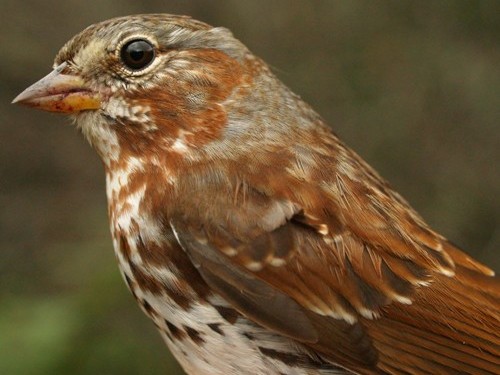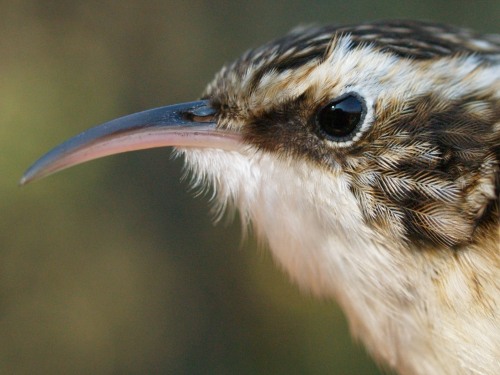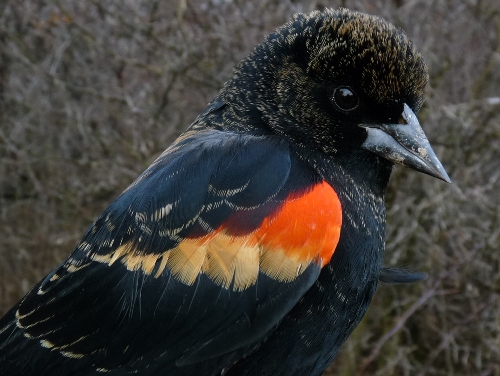|
McGILL BIRD OBSERVATORY |
|||||||||||||||||||||||||||||||||||||||||||||||||||||||||||||||||||||
Welcome
to the McGill Bird Observatory weekly report.
Click here for a complete listing of our archives.
Banders-in-charge: Bob Barnhurst, Simon Duval, Kristen Keyes Notes: After the incredibly weak migration last week, the 139 birds banded this week actually represents an improvement, although it is again the lowest total ever recorded for this time of year. However, we had a well above average number of repeats, suggesting that the relatively few birds present were hanging around for a while. Our total number of birds banded as of week 12 is lower than during any previous fall.
For a second straight week we had a record low count of species observed for this time of fall, with this week's count of 49 well below the range of 52 to 57 in prevoius years. However, with this week's addition of our first Clay-colored Sparrow of 2011, our season total is up to 141, which is above the mean of 138 by the end of week 12. The only new species banded this week was American Tree Sparrow, a species that we've banded earlier than this in all but one previous year.
White-throated Sparrow and Ruby-crowned Kinglet remained in the top three of species banded for a fourth week in a row. Each moved up one spot from last week, since last week's top species (Yellow-rumped Warbler) dropped right off the list, with not a single individual banded this week, an unusually drastic change from one week to the next! Junco moved up into a tie for second place, but with barely one-third as many as we would expect at this time of year (the six-year average for week 12 being 62 banded). After a peculiar absence from the top ten last week, Golden-crowned Kinglet again made a strong showing this week, increasing their season total to a slightly above average 66. Last week we commented on the unusual scarcity of American Robins, and the same remained true this week, with the 8 individuals banded being a full 100 fewer than our average count at this time of year. Rounding out the rest of the top ten were four sparrow species, plus Hermit Thrush, and our first significant number of Red-winged Blackbirds this fall (previously we had banded just one individual in week 2). Displaced from last week's list were Blue Jay, Black-capped Chickadee, and Ruby-crowned Kinglet. Canada Goose maintained its stranglehold atop the list of species observed, with more than twice as many observed daily as Red-winged Blackbirds. The top four ranks remained unchanged from last week, and while American Robins remain less common than usual (our six-year average for week 12 is 339 per day), the discrepancy isn't as stark as the banding numbers. The species ranked fifth through eighth shuffled around a bit compared to last week. Slate-colored Junco barely made the list, like robins much scarcer than usual (the daily average for juncos in week 12 was 50 over the previous six years), although the count was even lower in 2006. Mallard rounded out the list, with Yellow-rumped Warbler and Pine Siskin dropping off. After warm and then wet weather derailed most of last week with respect to saw-whet migration, this week also got off to a rough start with two of the first three nights lost to rain and high wind. However, in between those two nights we banded a good wave of 17 owls on Tuesday night. The second half of the week was more impressive, with four productive nights in a row, highlighted by a record 30 saw-whets banded on the night of October 22. Along with them were another two foreign recaptures, including our second in two weeks from Prince Edward Point in Ontario, and another which we haven't yet been able to track down. We had additional foreign recaptures on the nights before and after, one from Pennsylvania, and the other one also still a mystery (likely banded earlier this fall and not yet reported to the Bird Banding Office). In total we banded 64 saw-whets this week, and increased our season total to 156 banded plus 8 foreign recaptures, both counts shattering our previous record set last year of 122 and 2. Our great recapture rate this year serves as a reminder that those who support MBO through our Adopt-an-owl program have a chance to get reports on "their" owls in future years- please consider supporting MBO by adopting an owl for yourself or as a gift ... we have many of this year's owls available for selection, and will provide full details of any future encounters to anyone who adopts them.
|



